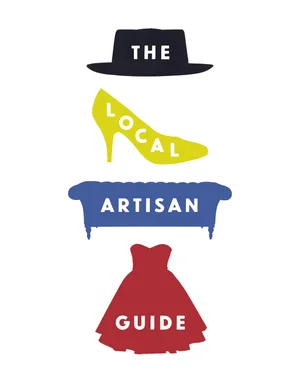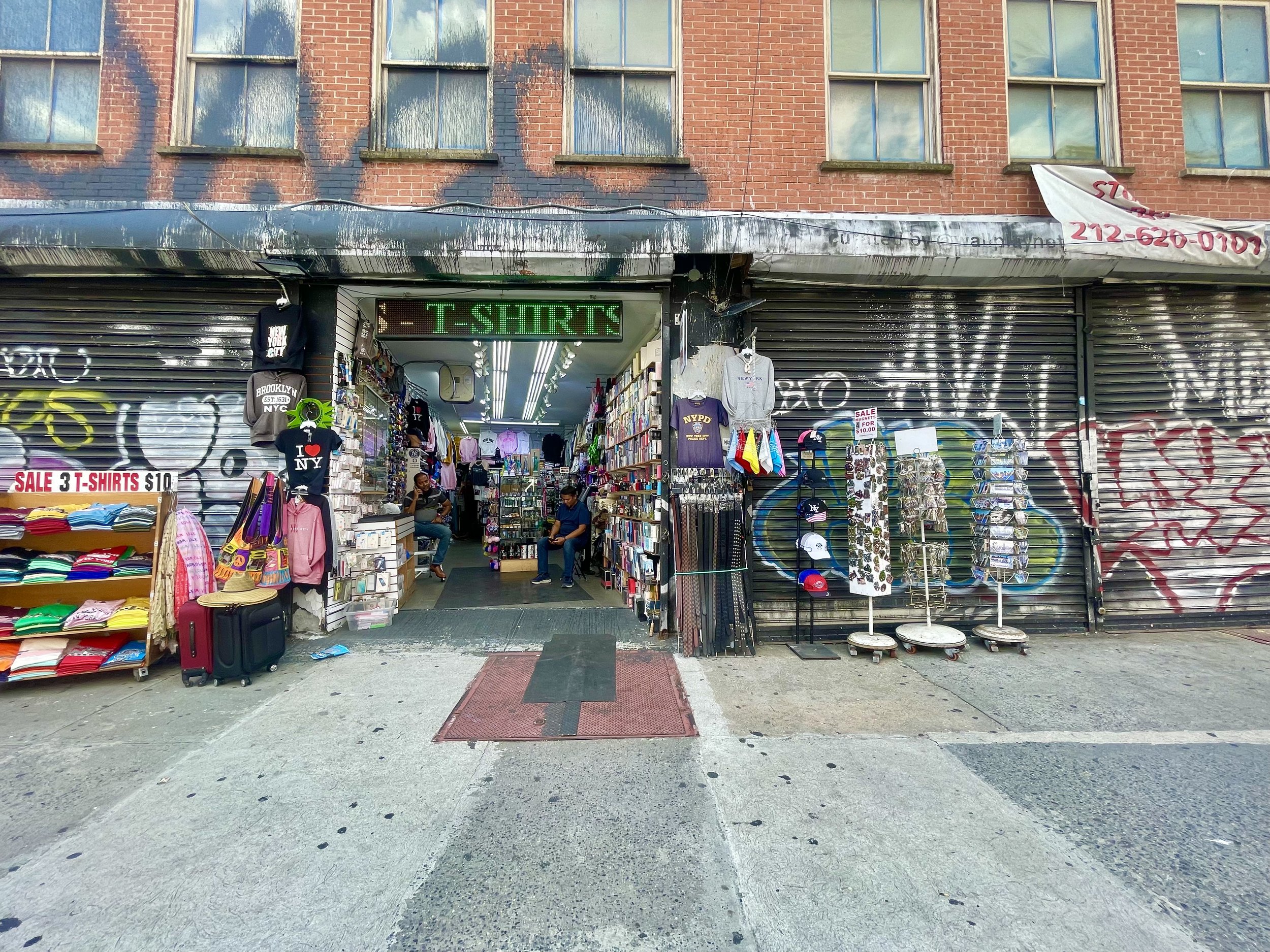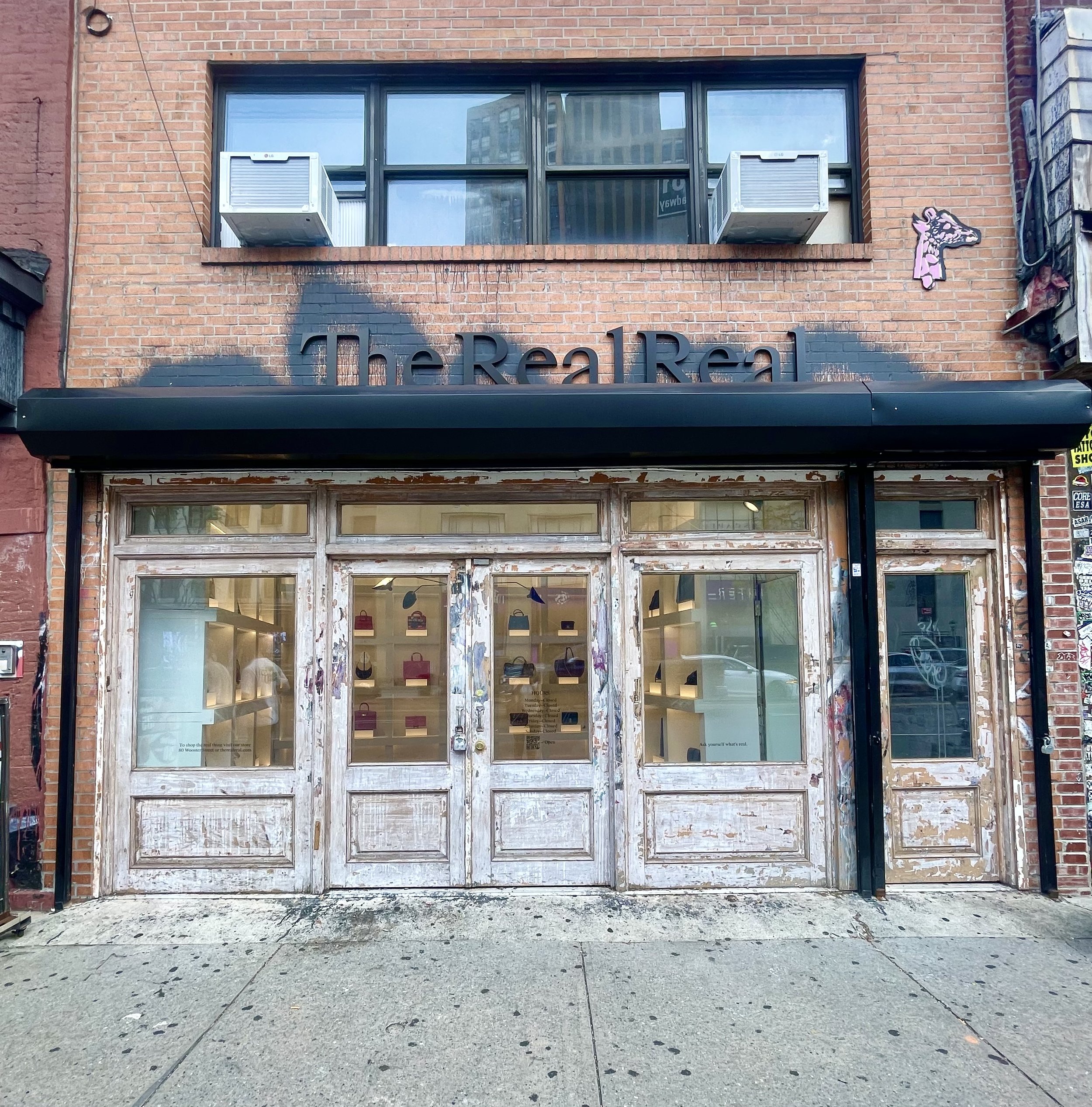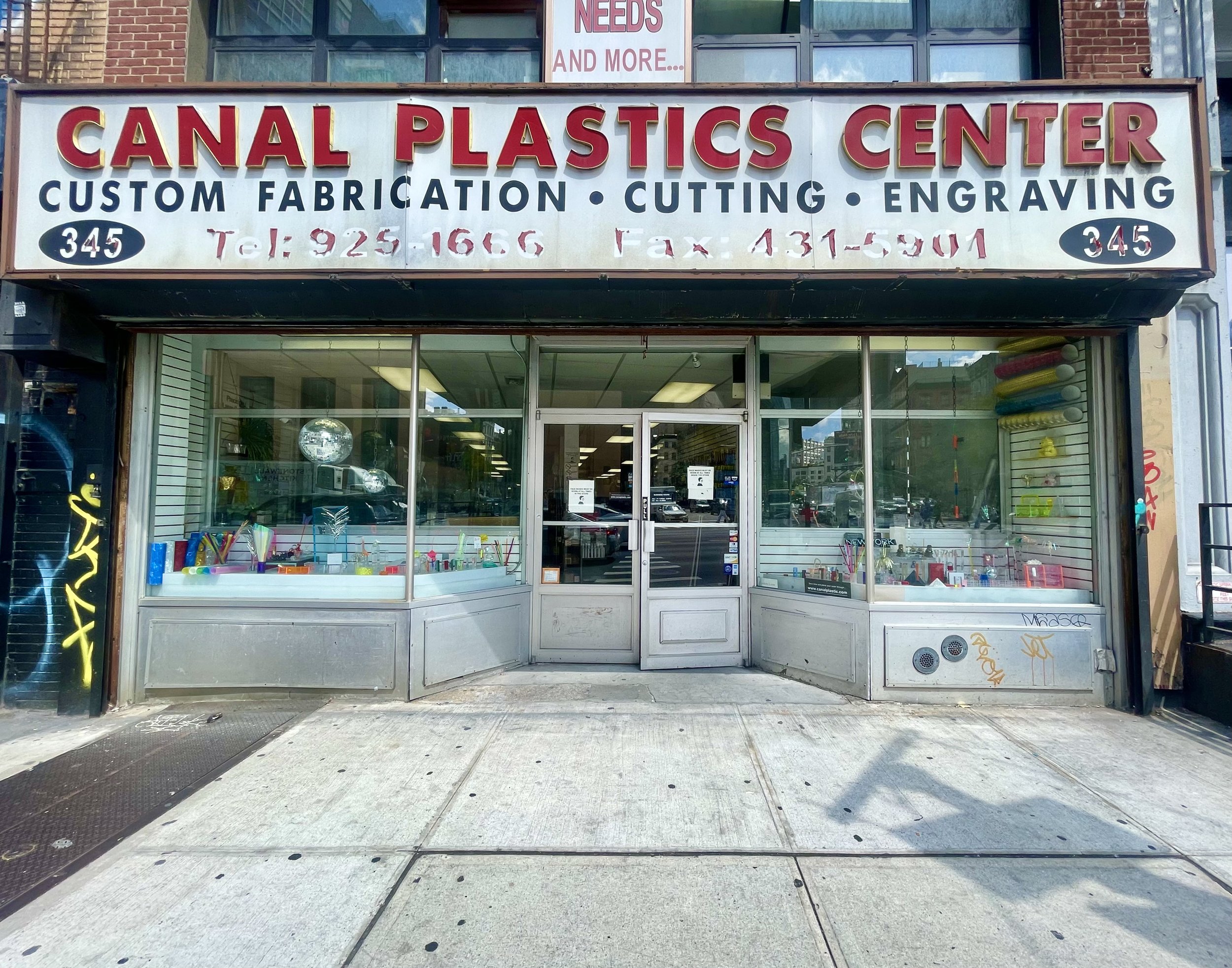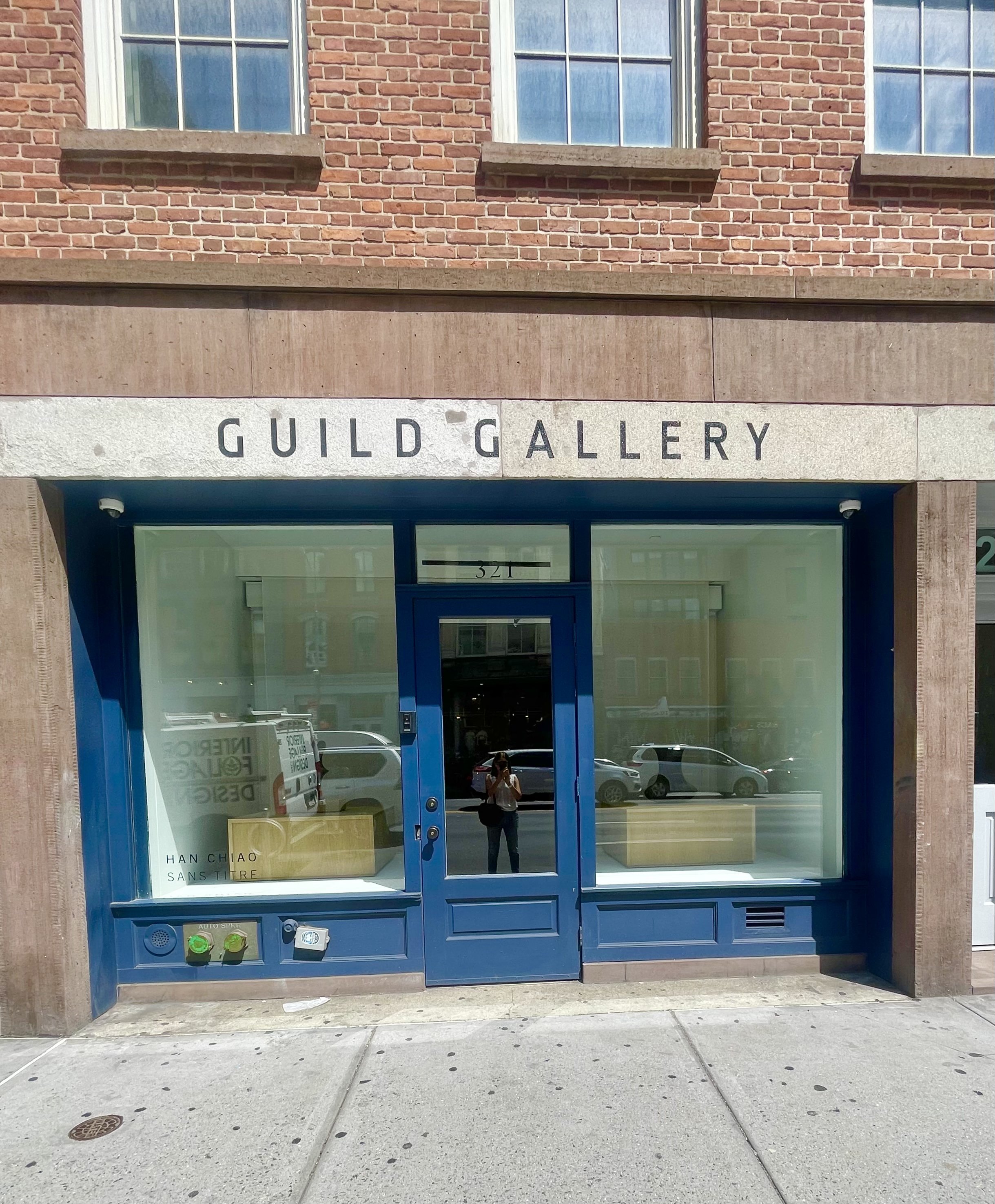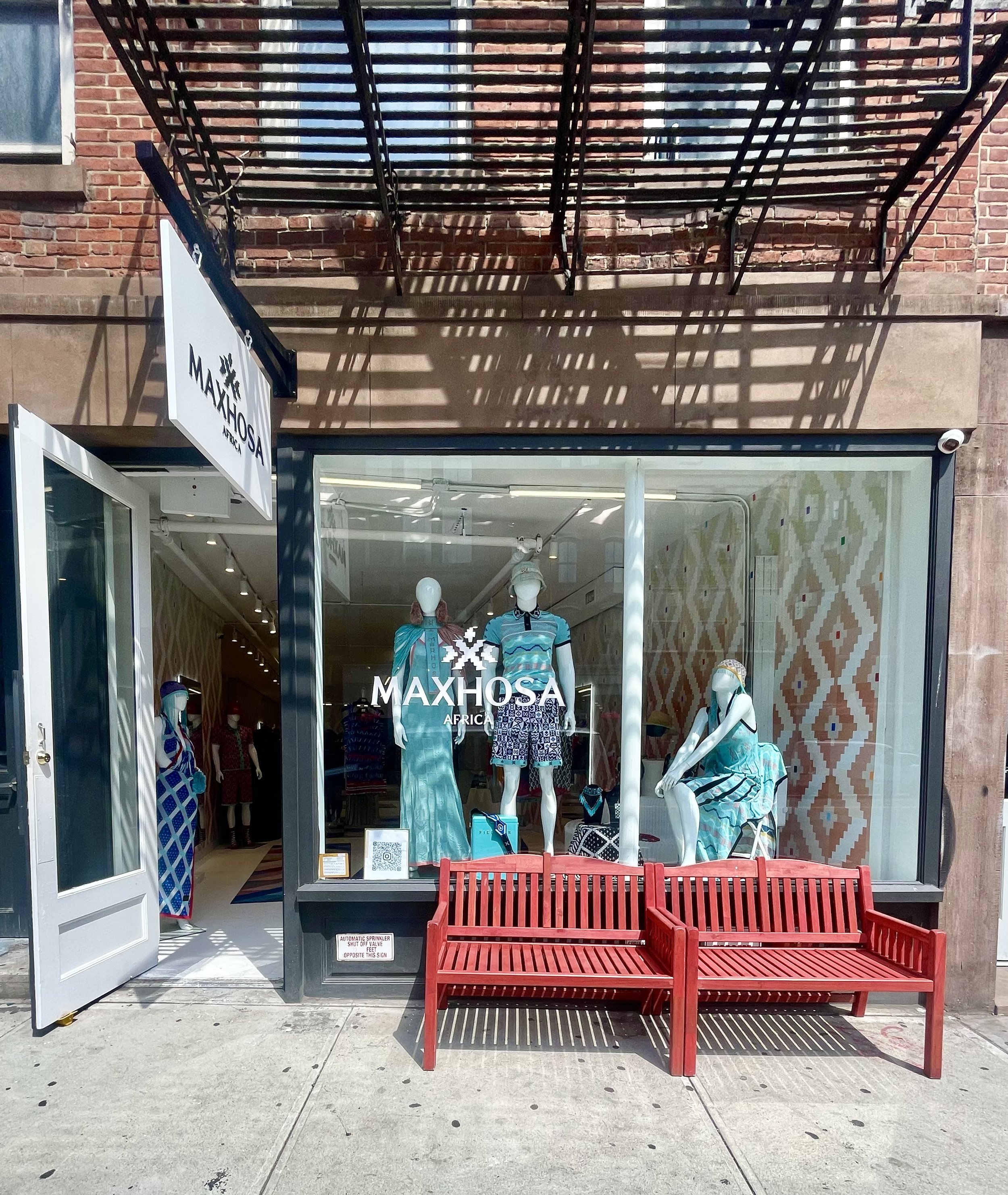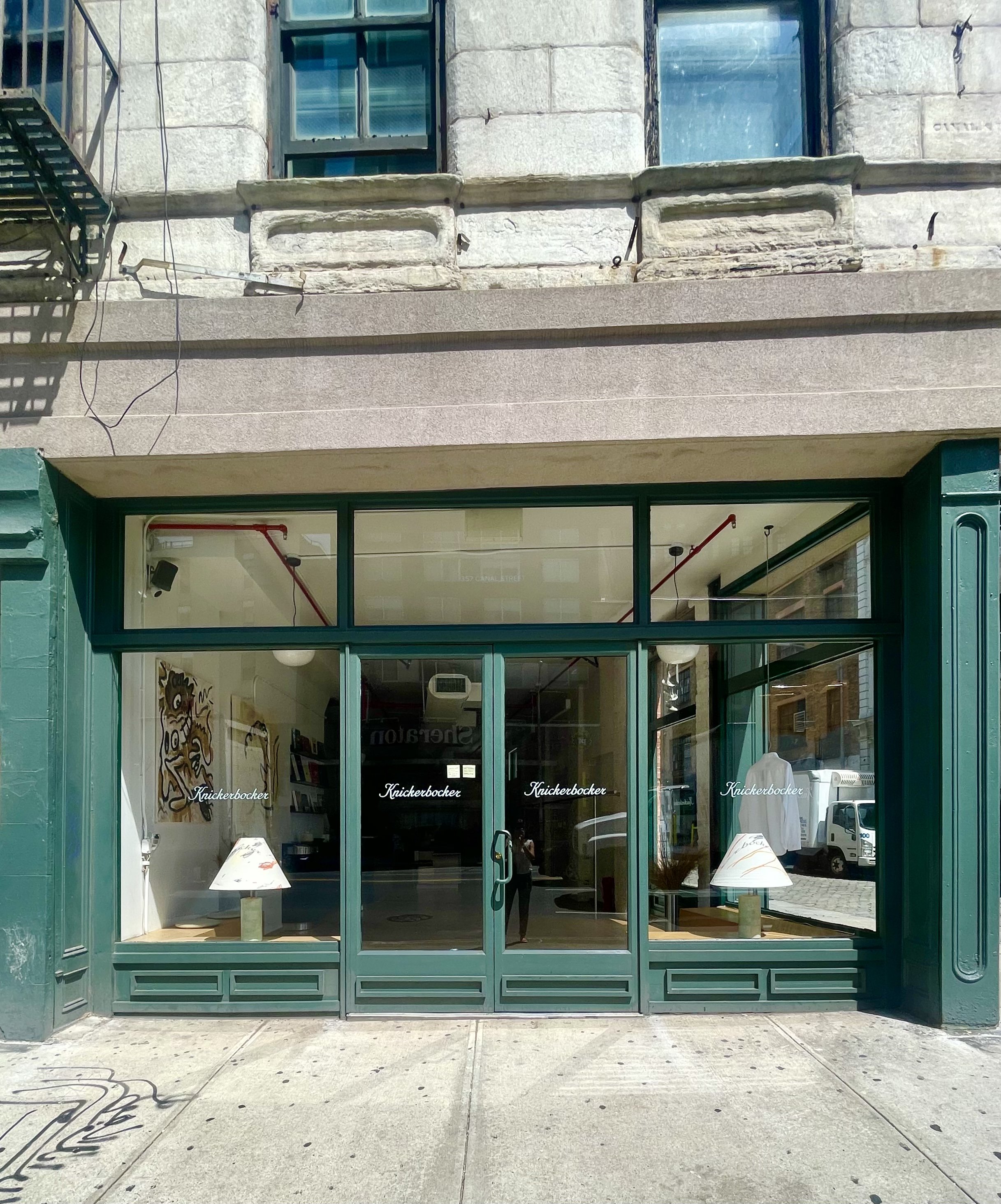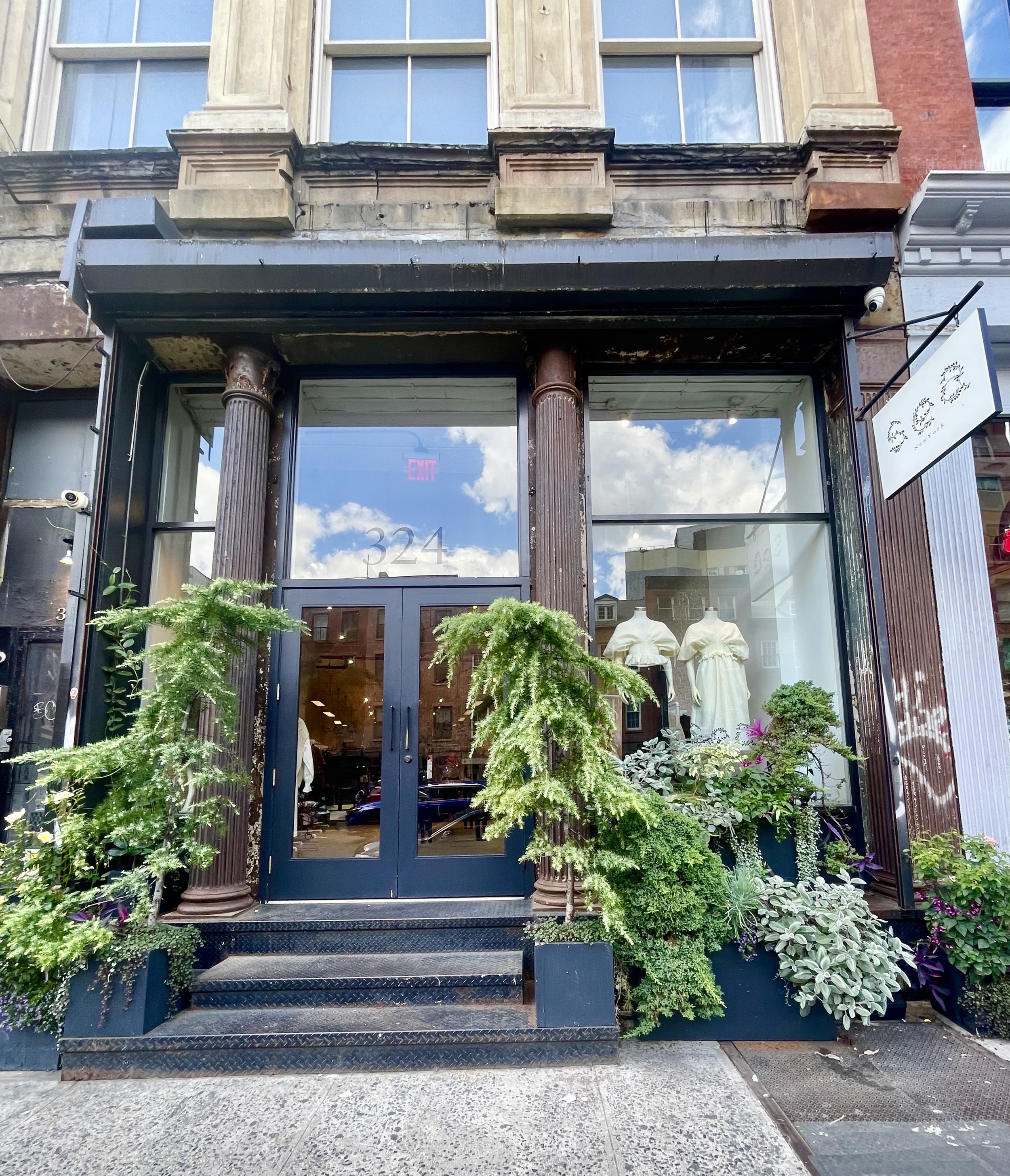If you live in New York City or have traveled to NYC as a tourist, chances are you may have visited the Canal Street area of downtown Manhattan. This is a street that was originally built on a canal that ran from east to west of downtown Manhattan and runs through Soho, Tribeca, Chinatown and the Lower East Side. In the last few decades Canal Street has become notorious as a destination for many tourists (and locals) to visit the many souvenir shops selling NYC paraphernalia. However it has also unfortunately morphed into a destination for selling counterfeit products, such as handbags, sneakers, belts, watches, etc. However in the last few years since lockdown from Covid, the span of Canal Street from West Broadway to Broadway has redeveloped into a destination for young brands that has breathed new life with legitimate and very stylish brands proving a neighborhood can reinvent itself.
What is wrong with Canal Street? Canal Street is a destination where tourists are dropped by in tour buses so they can shop the NYC souvenir shops. What ends up happening is that whether they know it or not, these tourists (and locals) end up supporting an illegal counterfeit industry. While Gucci, Prada, Chanel, Louis Vuitton are just a few blocks away from Canal Street, many of the tourists think they have scored a bargain by buying counterfeit products of these very brands by paying way less than the retail price.
In the last two years the mayor’s office has been organizing raids on these counterfeiters where hundreds of thousands of dollars of product is confiscated and destroyed. Before these recent raids, Canal Street was unashamedly displaying the counterfeit products to the point it was difficult to walk the sidewalks. Now with the occasional raids, the sellers of these illegal wares are more discreet by hiding the products in garbage bags. The police cannot do anything if the product is in the garbage bags but as soon as the product comes out an arrest can be made. You see a well honed operation going on all day of men, primarily African immigrants bringing carts of these bags full of counterfeit items from Manhattan Mini Storage, a well known storage facility near by that has multiple locations in New York. They go back and forth each day, from early morning to the evening carting their illegal wares.
African immigrants line Canal Street selling counterfeit products hidden from their bags.
There are two types of sellers hawking counterfeit product on Canal Street, one is the fore mentioned African immigrants who display their products on the sidewalks and in their garbage bags and the other are mainly Asians who show you pictures of counterfeit handbags and then take you to the back of a souvenir shop (not all souvenir shops on Canal Street operate illegal counterfeit products) where you can pay up to a few hundred dollars for top end counterfeit bags. I have also seen this near exact operation in London and Florence, in their high end shopping districts.
Some of the souvenir shops that dot Canal Street.
What these tourists and even locals who come to Canal Street to shop for counterfeit products are not aware of is the underbelly of the counterfeit world. Most of the attention about counterfeit products laments the lost of revenue and the design theft of the brand involved. This leaves out the most important elements of counterfeit products and that is who creates the illegitimate products and the organized crime lords who profit from these illegal sales.
While people may think they are sticking it to the brand for producing overpriced items, buying counterfeit products comes off the backs of an illegal workforce. Many of those members of this illegitimate workforce are children, trafficked in unsafe factories around the world, mainly in Asia who do not have the government making sure human rights practices are being observed. Even the workforce that are not children are still not working in safe conditions and paid fairly with many of their rights as workers swept under the table. It’s fair to say it’s another form of modern day slavery overseen by international criminals. Click here for a great article in Harper’s Bazaar on the hard facts and dark side of fakes. It was part of my responsibilities as a product developer and production manager for large retail brands to make sure we passed all social compliance regulations to make sure our products were not made from children and all workers were paid fairly, with all their rights as workers intact. In the end you have to ask yourself, “I’m I willing to help contribute to child labor for a fake bag, sneaker or watch?”
The Real Real, a company that purchases legitimate second hand high-end items and sells them mainly through a website with some stores around the country, has recently created a sham storefront on Canal Street that you cannot enter with a display of counterfeit bags from the illegitimate sales of bags on Canal Street. It is done as a protest against counterfeit items yet it fails to educate the public to what goes on behind buying illegal counterfeit items. The high-end brands and The Real Real are mainly concerned about their revenue loss and downplay the human rights issues with counterfeiting. Between this stunt from The Real Real and the lack of education from the mayor’s office, the counterfeit the industry is still strong on Canal Street from Broadway to the Bowery. Luckily on Canal Street from Broadway to West Broadway is another story with many facets both positive and negative.
The sham The Real Real storefront on Canal Street
New York City has a landscape that is in constant change which may that be for the best or the worst. Real estate developers seem to run this town which have made affordable housing not readily available and very unimaginative building designs coming up all over the city making for very odd city scapes. That said communities do come together and occasionally start evolving for the better. In recent years since the lockdown, many of the souvenir shops on Canal Street from Broadway heading west to West Broadway have been slowly replaced one by one by storefronts with young brands selling everything from art to home decor to apparel. You can now walk on the sidewalks without being harassed by counterfeit vendors and visit shop after shop of a well curated selection of small brands. Some of the utilitarian shops on Canal Street are still there and very much needed, like Canal Street Plastics and Canal Street Lighting.
Canal Street Lights has an incredible array of lightbulbs.
Canal Plastics Center has been around for decades and has been an invaluable source for local artists.
Get your disco ball at Canal Sound and light.
What was an embarrassment has slowly evolved into a new community that attracts more unique designers who believe in shopping local and shopping small. Here are some of the brands that have rejuvenated Canal Street and Soho.
Roman and William Guild
Although there is entrance on Howard Street (along with an incredible restaurant, La Mercerie) there is also an entrance on Canal Street between Broadway and Mercer Street. Roman and Williams Guild is the brainchild of Robin Standefer and Stephen Alesch who are world renowned interior designers and with this store are sharing their aesthetics of high-end home decor. The store offers a treasure trove of items and furniture from around the globe. Although quite pricey, it is worth visiting alone to see the amazing selection of products made from artisans around the world.
GALLERY GUIDES
Gallery Guide, 317 Canal Street, NYC
Gallery Guides has nothing to do with galleries but it is a very colorful shop that offers sports jerseys from all different sports at very affordable prices. Since there are so many stores nearby with very expensive sneakers it helps that you can get your jerseys for a better price.
GUILD GALLERY
Roman and Williams decided to take advantage of the available storefronts nearby and opened up an art gallery that features artists and artisans they have worked with from around the world.
CLASSIC FOOTBALL SHIRTS
Classic Football Shirts is a brand that offers football (soccer) shirts from teams all over the world for men, women and children. A little bit more expensive than Gallery Guides but way more offerings and more official.
MAXHOSA
MAXHOSA AFRICA, a South African knitwear brand founded in 2010 by Laduma Ngxokolo, originating in the desire to explore knitwear design solutions suitable for amakrwala (Xhosa initiates). Using traditional Xhosa beadwork patterns, symbolism and colors, Maxhosa showcases the beauty, culture, language and aspiration of the Xhosa people of Africa.
DRAKE’S
Drake’s was founded by Michael Drake in East London in 1977. Fast forward 2024 in NYC, under the guidance of Creative Director Michael Hill, Drake's produces soft tailoring in Italy, traditional knitwear in Scotland, shirts in their own shirt factory in Chard, Somerset, alongside premium jersey and an expansive range of outerwear, accessories and Selvedge denim. Drake’s also does “made to order”. You would never have suspected just a few years ago for such a luxury destination on Canal Street.
NORDIC KNOTS
Nordic Knots is a contemporary rug shop that fuses function and aesthetics with a Scandinavian sensibility that craft timeless textiles for the modern home.
CANAL PROJECTS
The art world is coming back to Soho, along Canal Street. Canal Projects is a non-profit contemporary art institution dedicated to supporting international artists at pivotal moments in their careers.
KNICKERBOCKER
Knickerbocker, A men’s New York based brand founded by Andrew Livingston in 2013, has a fusion of classic American style with layered elements of art, music, sports emphasizing tradition, utility and purpose. The bookstore along is worth visiting Knickerbocker.
MERZ B. SCHWANEN
Merz B Schwanen is a Berlin based brand founded in 1911 and reinvented by Gitta and Peter Plotnicki in 2011 based on creating a wardrobe using sustainable methods including up cycling second hand clothes and reviving the loop wheelers that created the original brand.
HAPPIER GROCERY
A new type of local grocery store has opened up that includes a bakery, sushi, pizzeria, groceries of hard to find brands, beverages, merchandise, flowers and even a magazine section that carried zingmagazine which had the issue I curated a section on! Love this place!
SEA
This women’s brand was founded by Sean Monahan and Monica Paolini combining Monica’s eye for vintage-feeling pieces and Sean’s leaning towards more modern, clean styles. The mix of lace, trimming, embroidery and technical fabrics have provided a unique collection.
STELLAR WORKS
Stellar Works is a furniture brand established in 2012 that focuses on fusing two ideas together: East and West, heritage and modernity, craft and industry along with sustainability in their methods of creation.
If you should ever visit Canal Street as a resident or tourist I would hope that you would seek out this more positive side of Canal Street west of Broadway and have a new enlightened view of the dangers and dark side of the counterfeit trade. The future of the east side of Canal Street I believe is going to mirror the west side little by little. What will accelerate this will be when the general public is no longer ignorant of the blatant criminality and human rights violation of counterfeit products. Right now brands highlight the financial loss and design theft which does not galvanize society. The city and mayor of NYC can help educate the public with awareness campaigns and Community Boards can also help by doing what they do best, closing down places when people complain. The best way to help for now is to spread the news and walk on by.
By Natalie Rivera
